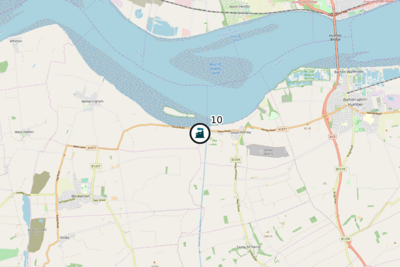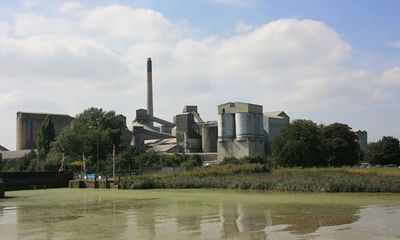South Ferriby Cement Kiln
| South Ferriby Cement Kiln | |
 See Cement Kilns → page for a larger UK Wide map. | |
| Waste Licence | BL1029IP |
| Operator | Cemex |
| Parent Company | Cemex SAB de CV |
| Clinker Capacity | 0.75 Mt |
Summary site information collated from a variety of sources.

Overview
WikiWaste has used the website Cement Plants and Kilns in Britain and Ireland[1] extensively for the reference material for each individual cement kiln page. The detail on this reference website is extensive and as WikiWaste is focused upon the UK waste and resource market, only the key highlights are captured from this website (and company websites accordingly) to provide background and context. South Ferriby started manufacturing clinker in 1938 and up to 2015 had produced 25 million tonnes of clinker through 3 rotary kilns over this period.
Ownership
- 1938 to 1962 Eastwoods Ltd
- 1962 to 1979 Rugby Portland Cement Co. Ltd
- 1979 to 2000 Rugby Group
- 2000 to 2005 RMC
- 2005 to Present Cemex
The Process at South Ferriby
There are two kilns operating on the site, one supplied by Polysius and one by FLS (FLSmidth).
Raw Materials
The primary raw materials are chalk and clay taken from different areas of the same adjacent quarry[2].
Waste Used on Site
The South Ferriby site waste return to the EA for the most recent year of 2018 showed 47,376 tonnes of the following wastes used on site, primarily for the primary purpose of substituting fuel requirements in the plant:
| Waste Class | Description | Tonnage Input |
|---|---|---|
| 10 02 13* | sludges and filter cakes from gas treatment containing dangerous substances | 10,724 |
| 19 02 08* | liquid combustible wastes containing dangerous substances | 23,009 |
| 19 02 10 | combustible wastes other than those mentioned in 19 02 08 and 19 02 09 | 20,346 |
The proportion of the RDF/SRF tonnage used by Cemex is referred to by the company as Climafuel.
